Island Architecture
Before the Spanish conquest and
colonisation, the native people lived in caves and simple huts where
caves could not accommodate the growing population.
These small seasonal
shelters had walls of stone and thatched roofs usually circular and
oval. Remains of these dwellings can still be seen in certain parts of
the island although many were utilised and changed over the years by the
colonisers and are unrecognisable. For example a small settlement of
circular Guanche shelters have been made into houses by local people at
Cofete (close to the restaurant) and if you look closely you can still
see some of their outlines.
At Atalayita a few of these native dwellings have been restored.
At Atalayita a few of these native dwellings have been restored.
Unfortunately the native culture was not
considered worthy of preservation in past times and very little traces
remain of their homes and way of life.
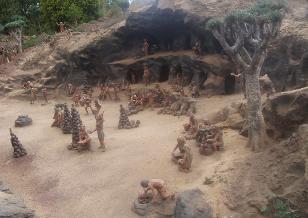
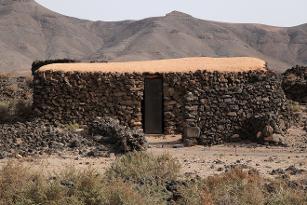
Architecture gradually developed after the Spanish conquest and buildings were either simple common style or, less frequently, refined and stately. Socio-economic factors dictated the type of house built, as there was no local architectural tradition apart from the native one.
In the XVI century, the Canaries in general began to introduce a series of artistic models from Europe adapted to suit the local climate and landscape which, together with other factors, such as shortage of materials and skilled labour, contributed to the creation of the islands architecture.
In the XVI century, the Canaries in general began to introduce a series of artistic models from Europe adapted to suit the local climate and landscape which, together with other factors, such as shortage of materials and skilled labour, contributed to the creation of the islands architecture.
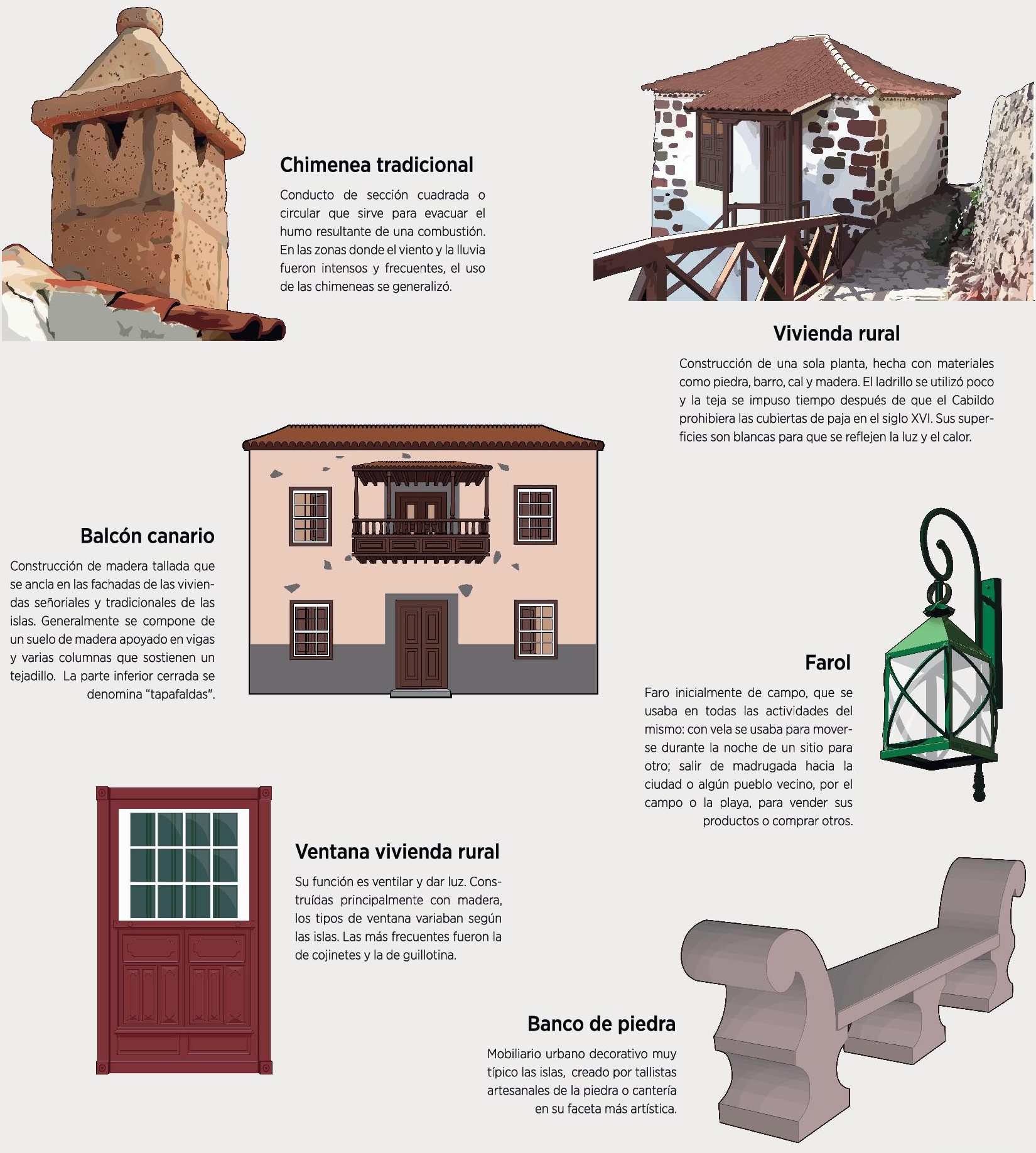
Humble homes were simple- one storey arranged in a
longitudinal or L-shape, the walls were made in dry-stone usually
painted with lime. Many lime kilns can still be found around the villages
and are being gradually restored.
The roofs of the dwellings were generally formed from beams, branches and straw.
The roofs of the dwellings were generally formed from beams, branches and straw.
Rain water collection and conservation
factors were built into the design of the homes which can be seen in the
form of water channels that are located nearby; these direct the
precious water into the “aljibe” (round or arched stone walled
subterranean reserves)
Sometimes wells were dug but the resultant water was almost always saline.
Sometimes wells were dug but the resultant water was almost always saline.
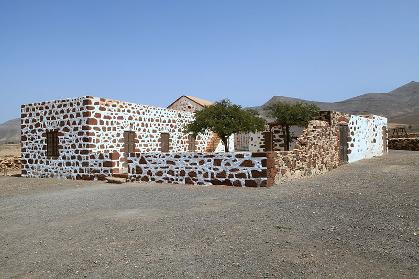
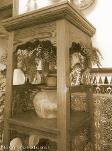
Sometimes an oven
was located nearby, these domed stone walled structures were used for
the family baking. A fire was lit in their interior and then scraped out
once the oven had reached a high enough temperature; the food was then
placed inside and the door closed. Kilns of similar design and function
were also used for firing pottery. Many of these ovens can still be
found by old traditional houses and ruins although nowadays rarely
utilised.
A group of houses in this style can be visited at Alcogida, Tefia where a small farming community has been restored.
A group of houses in this style can be visited at Alcogida, Tefia where a small farming community has been restored.
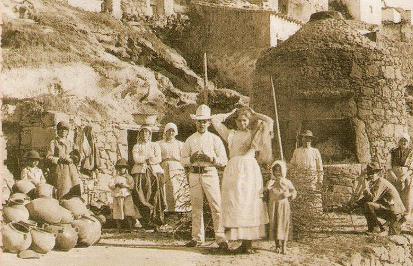
The most beautiful of the common traditional houses can be found in a few of the villages which were more prosperous such as Betancuria the old capital
These are generally two-storey with the storeroom downstairs, the
bedrooms and a small sitting room upstairs. The kitchen, wine cellar and
stalls are separate buildings. The houses are occasionally decorated
with geometric designs and occasionally stone that came as ballast in
ships returning from South America.
The type of architecture visible in public buildings can be classed as civil, religious or military style.
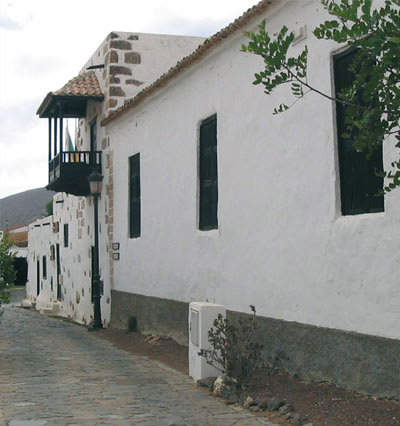
The
best example of the military style in the north of the island is the
“Colonels house” (“La Casa de Los Coroneles”) in La Oliva.
Built in the 18th Century, when many of the island's residents would not have had a single window in their dwellings, the sight of the sixteen on the main facade of the manor would have been a statement of the authority and wealth of those who resided within. Many features of the home are designed to send out a message of power. The twin battlements on either side of the main facade would not have held any practical military purpose, but would have been added to the house as another statement of political dominance.
Built in the 18th Century, when many of the island's residents would not have had a single window in their dwellings, the sight of the sixteen on the main facade of the manor would have been a statement of the authority and wealth of those who resided within. Many features of the home are designed to send out a message of power. The twin battlements on either side of the main facade would not have held any practical military purpose, but would have been added to the house as another statement of political dominance.
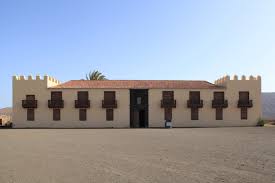
The construction of the other most significant buildings of the municipality of La Oliva was also undertaken in this era of splendour, the Church of La Oliva, (Our Lady La Virgen de la Candelaria.) and the chapel of Puerto Escondido, in La Oliva.
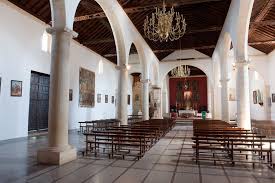
La Casa del Ingles
Situated just outside of the village of La Oliva (on the left hand side of the La Oliva to Villaverde road) this beautiful 18th century house, presently in a sad state of ruin will hopefully soon be restored.
An excellent example of a typical rural bourgeois residence, the house was built during the peak of the village’s agricultural-commercial period by a family from La Palma active in trade with the Americas.
The vagaries of fortune eventually resulted in its sale and it later passed for a period to an English naturalist named Mr Parkinson who spent long periods on the island studying its flora and fauna.
The house is still known as the “House of the English” even though it later changed hands and was used for a diversity of activities including being occupied by the army after the civil war. For some years infantry troops used one part whilst the other was employed as an infirmary for the military forces that were located in La Oliva.
Long abandoned and in a very deteriorated state the beauty of the house is still evident and it has now fortunately been given the status of a Historic Monument of Cultural Interest and should be restored to its former glory; 15,000 m2 of surrounding land has also been given the protected status so as to ensure the preservation of its historical image.
The two storey square house has thick stone walls, many interesting architectural features and is built around a large central patio.
Although it is at present unsafe to enter, its atmosphere, evocative of past times on the island can be appreciated from outside.
Situated just outside of the village of La Oliva (on the left hand side of the La Oliva to Villaverde road) this beautiful 18th century house, presently in a sad state of ruin will hopefully soon be restored.
An excellent example of a typical rural bourgeois residence, the house was built during the peak of the village’s agricultural-commercial period by a family from La Palma active in trade with the Americas.
The vagaries of fortune eventually resulted in its sale and it later passed for a period to an English naturalist named Mr Parkinson who spent long periods on the island studying its flora and fauna.
The house is still known as the “House of the English” even though it later changed hands and was used for a diversity of activities including being occupied by the army after the civil war. For some years infantry troops used one part whilst the other was employed as an infirmary for the military forces that were located in La Oliva.
Long abandoned and in a very deteriorated state the beauty of the house is still evident and it has now fortunately been given the status of a Historic Monument of Cultural Interest and should be restored to its former glory; 15,000 m2 of surrounding land has also been given the protected status so as to ensure the preservation of its historical image.
The two storey square house has thick stone walls, many interesting architectural features and is built around a large central patio.
Although it is at present unsafe to enter, its atmosphere, evocative of past times on the island can be appreciated from outside.
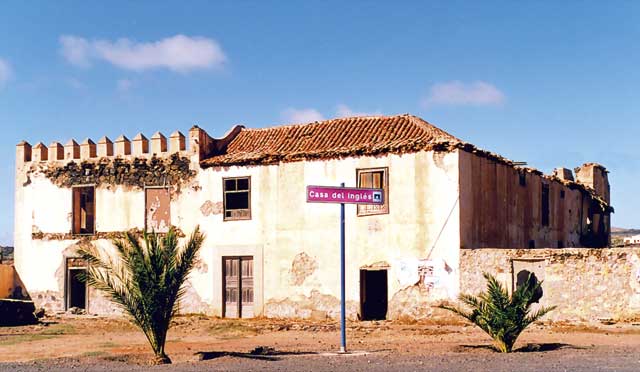
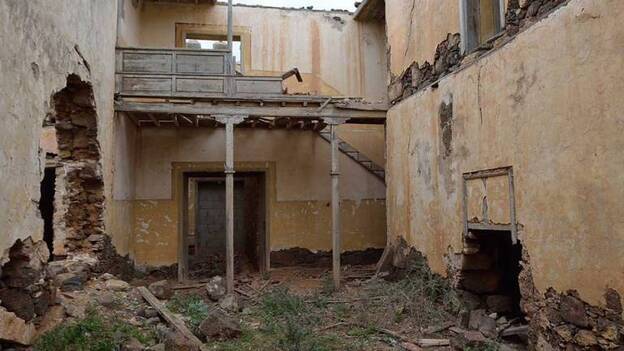
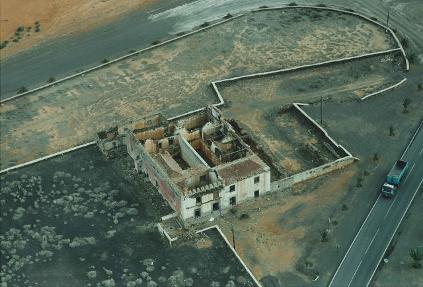
Other Military architecture was based on
the island's defence requirements, with forts to deter attacks from
foreign and pirate ships such as the Castle of El Tostón, in El Cotillo.
During this period, the island had a strong farming and livestock tradition, and was able to provide the other islands with grain for some time. However, after three years of drought and bad crops, work came to be abandoned, and in some cases there was migration from the interior to the coastal areas.
Later, the influx of labour to Corralejo consolidated the area as a tourist destination.
During this period, the island had a strong farming and livestock tradition, and was able to provide the other islands with grain for some time. However, after three years of drought and bad crops, work came to be abandoned, and in some cases there was migration from the interior to the coastal areas.
Later, the influx of labour to Corralejo consolidated the area as a tourist destination.
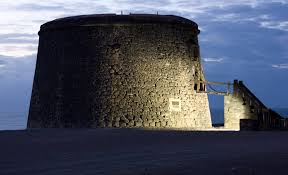
Stately Homes
The stately
home can be seen in a few parts of the island although not as frequently
as in the islands that were previously more prosperous. They are
generally big, two-storey houses that, in the countryside, had
agricultural buildings added to the dwelling structure.
These
buildings normally have thick walls with large doors; the façades of
the stately homes are symmetric and simple in style, with the front door
leading into an interior L or U-shaped patio. From the patio, doors
lead off into various different rooms, the main ones of which had
coffered ceilings. This is a variation of the Andalusian house, which,
in turn, was influenced by Arab architecture.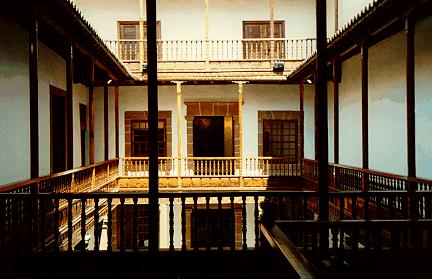
Religious Architecture
Religious
architecture can be seen in churches and small hermitages; the island
model is simple and practical in nature, walls are thick and windows are
narrow making them, like the traditional houses, cool in the hottest
days of summer. There are usually few adornments in the buildings,
The church at Betancuria is an exception due to its location in
the former island capital it is of a more elaborate style and even won
Cathedral status for a time.
Nearby
are the remains of a monastery built by Franciscan brothers that once
had a palm wood roof due to the shortage of other timber.
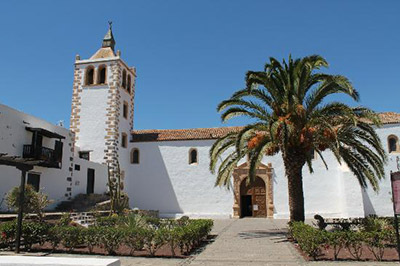
Hermitages are small, with one nave, and are rectangular in shape usually with a belfry housing the bells outside.
Poorer, smaller villages had small shrines and an interesting one decorated with seashells can be seen on the beach of Los Molinos.
Poorer, smaller villages had small shrines and an interesting one decorated with seashells can be seen on the beach of Los Molinos.

